"Wie groß die Litrenprägung damals gewesen ist, mag daraus hervorgehen, daß von 29 Exemplaren, die aus einem Fund von etwa vierzig Stück einmal abgegossen werden konnten, kein Exemplar mit dem anderen stempelgleich war."
"The scale of litra production at the time can be gauged from the fact that, of 29 specimens once cast from a hoard of about forty pieces, no specimen was die-identical with another."1

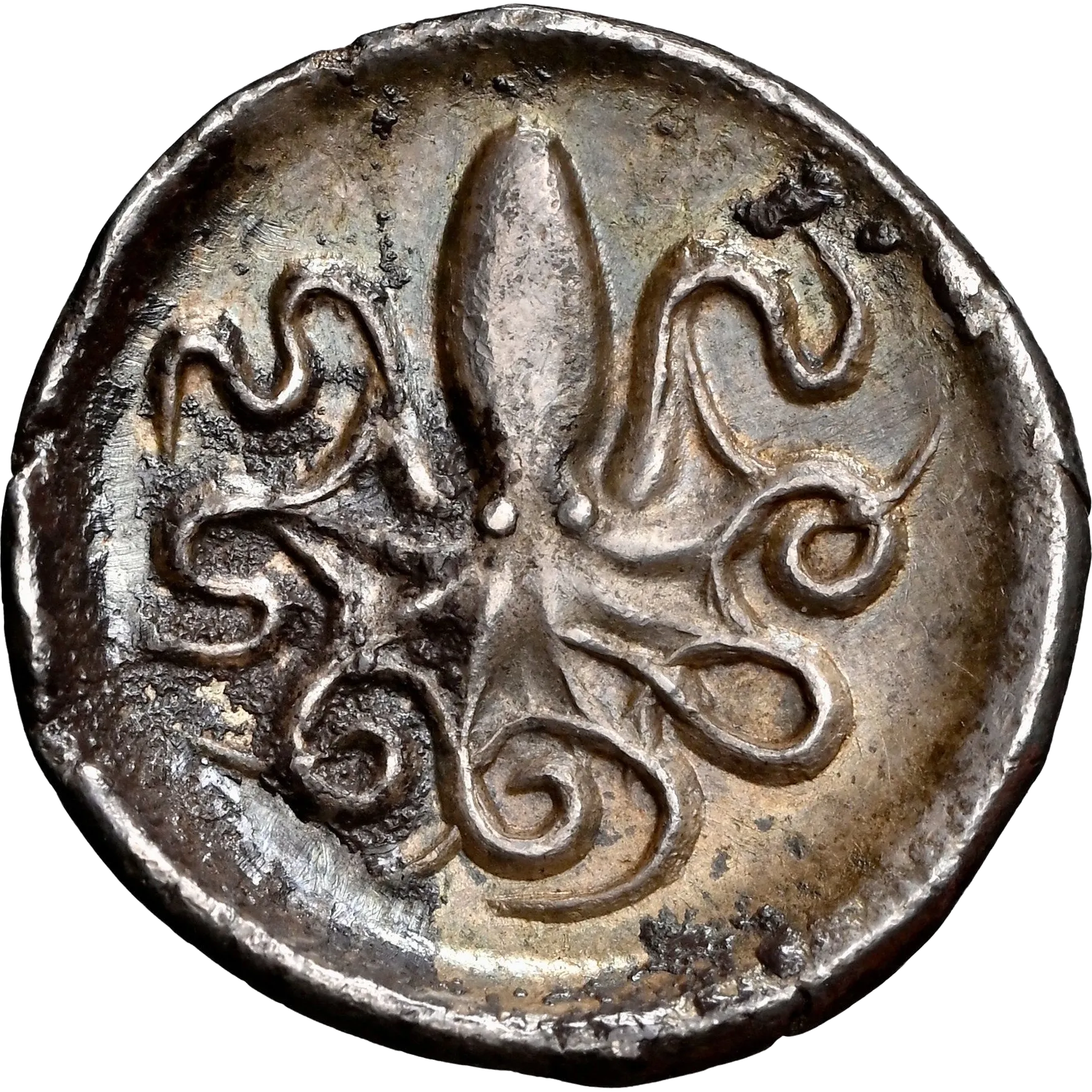
The sheer volume of octopus litra production during the Second Democracy was extraordinary2. These were struck in such quantity that even today they remain surprisingly accessible, giving nearly anyone the chance to own a coin from Syracuse, which is widely considered one of the finest, if not the finest, mints of the ancient Greek world. In my opinion, no other mint in history has matched Syracuse’s combination of artistry, technical skill, and variety. The octopus litrai are a perfect example: humble in denomination, but still carrying the elegance and character that made Syracusan coinage famous across the Mediterranean.
These small silver coins fall into three broad categories: archaic, transitional, and classical.
- Archaic: struck at the beginning of the Second Democracy, around 466–460 BCE.
- Transitional: issued in the middle of the Second Democracy, roughly 450–420 BCE.
- Classical: produced toward the end of the Second Democracy and into the early rise of Dionysios I, between 415 and 400 BCE.
This article focuses on the archaic group, as organized by Erich Boehringer in his magnum opus, Die Münzen von Syrakus.
The Archaic Series
Boehringer divides the octopus litrai into two series:
- Series XIIIa (nos. 415–430) continues the older archaic manner that develops out of Series XII.
- Series XIIIb (nos. 449–467) belongs to a new engraver and forms the true transitional style between archaic and classical. In XIIIb the legend stands on the obverse, and except for reverse R 335 the fourth arm of the octopus bends to the right.
Together they sit at the stylistic crossroads: XIIIa still rooted in the old tradition, XIIIb pointing toward the coming “severe” style. The full break arrives only with Series XIV.
Series XIIIa (nos. 415–430)
General Traits: Arethusa wears a pearl taenia3, a pearl necklace, and a pendant earring. Her hair is tied back in a smaller bun or ponytail. In groups 462–464 and 465–467 the face is more rounded, while in 449–461 it is sharper. The legend is placed on the obverse, and on the reverse the octopus has its fourth4 arm bent to the right, except for reverse die R335 where it bends left.
1) Boehringer 415 – 422 (O214/R293 - O221/R300)


Unlisted dies • 0.80 g • 12.0 mm • die axis 3h • AR
Collection of the author - view coin page
- Obverse: Head of Arethusa facing right, wearing pearl taenia, pearl necklace, and pendant earring; hair brushed forward; legend ΣVRA in the right field; surrounded by a beaded border.
- Reverse: Octopus with the fourth tentacle bending left
- Corresponding tetradrachms: Boehringer 409–414 (R288-292) (and earlier issues).
2) Boehringer 423 – 430 (O222/R301 - O228/R306)
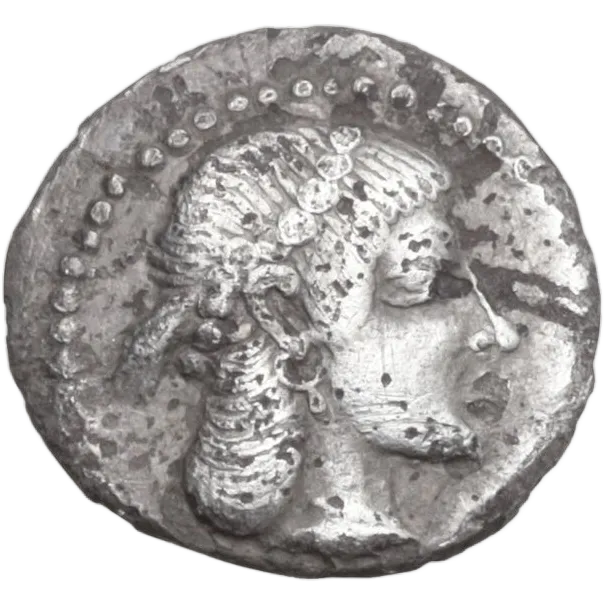
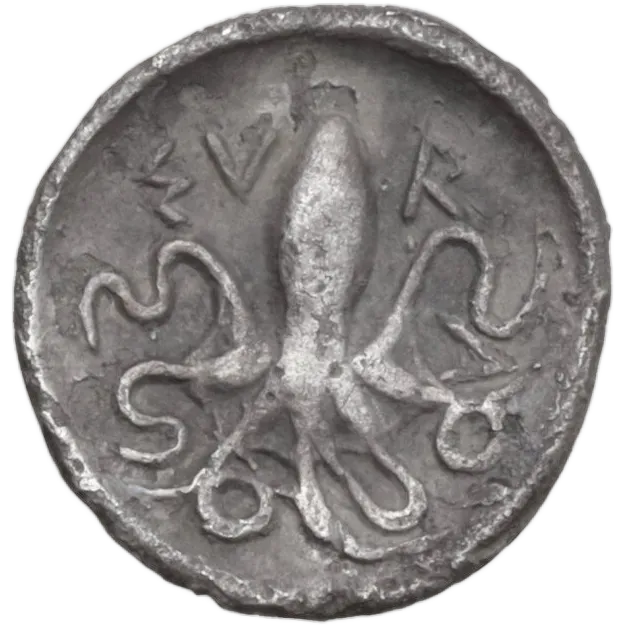
B 429 (O227/R306) • 0.81 g • 12 mm • die axis 2h • AR
Collection of the author - view coin page
- Obverse: Head of Arethusa facing right, wearing pearl taenia, pearl necklace, and pendant earring; hair brushed forward; surrounded by a beaded border.
- Reverse: Octopus with the fourth tentacle bending right; legend arranged with ΣV to the left, R to the right, and A between the first and second tentacle; octopus consistently has seven arms;
- Corresponding tetradrachms: Boehringer 409–414 (R288-292) (and earlier issues).
Series XIIIb (nos. 449–467)
General Traits: Arethusa wears a pearl taenia, a simple necklace, and a pendant earring. Her hair is tied back in a smaller bun or ponytail. In groups 462–464 and 465–467 the face is more rounded, while in 449–461 it is sharper. The legend is placed on the obverse, and on the reverse the octopus has its fourth arm bent to the right, except for reverse die R335 where it bends left.
3) Boehringer 449 – 461 (O237/R321 - O245/R331)
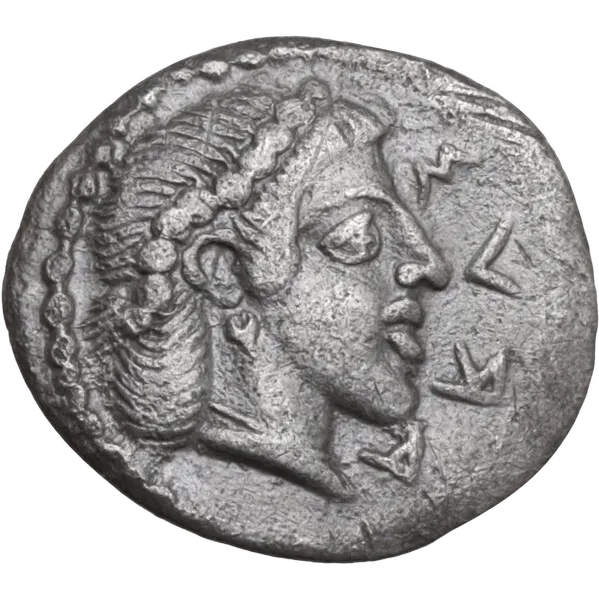
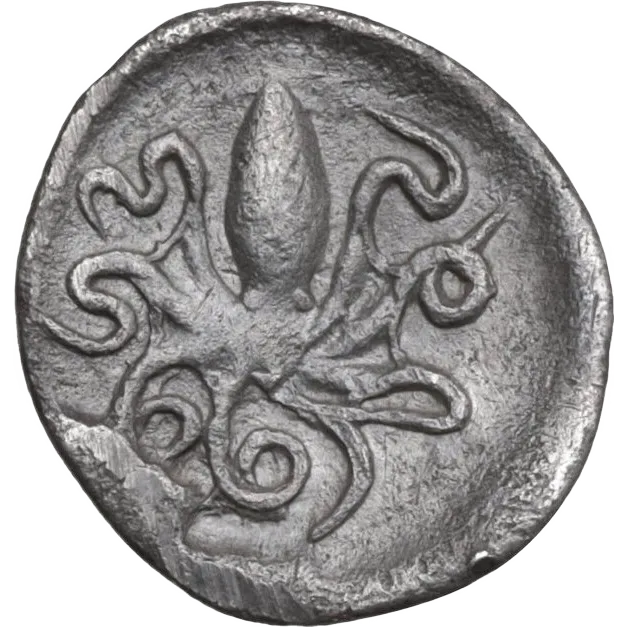
B 460 (O224/R330) • 0.70 g • 12.5 mm • die axis 4h • AR
Collection of the author - view coin page
- Obverse: Head of Arethusa facing right, wearing pearl taenia, simple necklace, and pendant earring; hair brushed forward (exception O243 with hair sideways); legend ΣVЯA in the right field; retrograde "R"; surrounded by a beaded border.
- Reverse: Octopus with the fourth tentacle bending left
- Corresponding tetradrachms: Boehringer 436–438 (R312-314).
4) Boehringer 462 – 464 (O246/R332 - O248/R334)
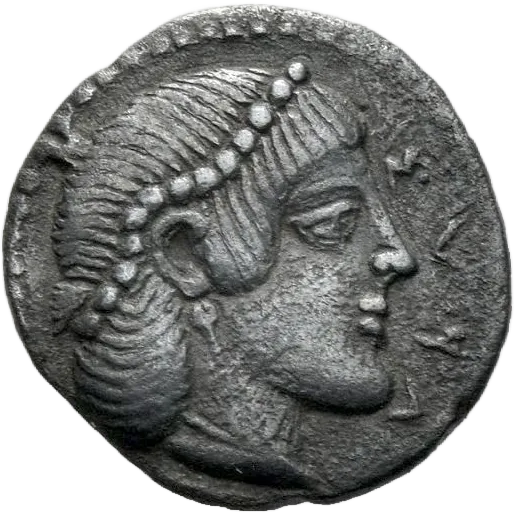
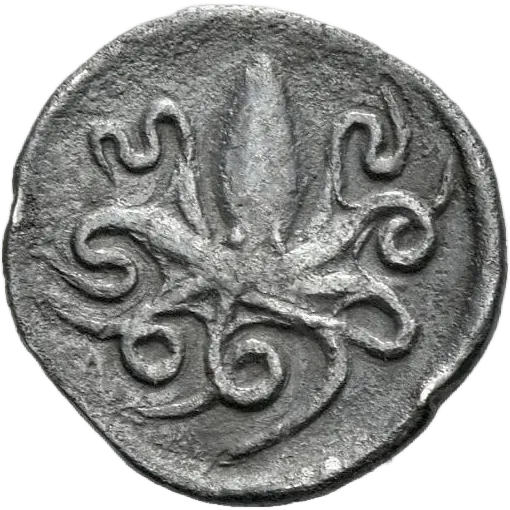
B 462 (O246/R332) • 0.59 g • 11.0 mm • die axis 9h • AR
Naville Numismatics, Auction 97 (10 Aug 2025), lot 61 - Archive link
- Obverse: Head of Arethusa facing right, wearing pearl taenia, simple necklace, and pendant earring; hair brushed forward; legend ΣVRA in the right field (exception O246 with retrograde "R"); surrounded by a beaded border.
- Reverse: Octopus with the fourth tentacle bending left
- Corresponding tetradrachms: Boehringer 439–448 (R315-319).
5) Boehringer 465 – 467 (O249/R335 - O251/R336)
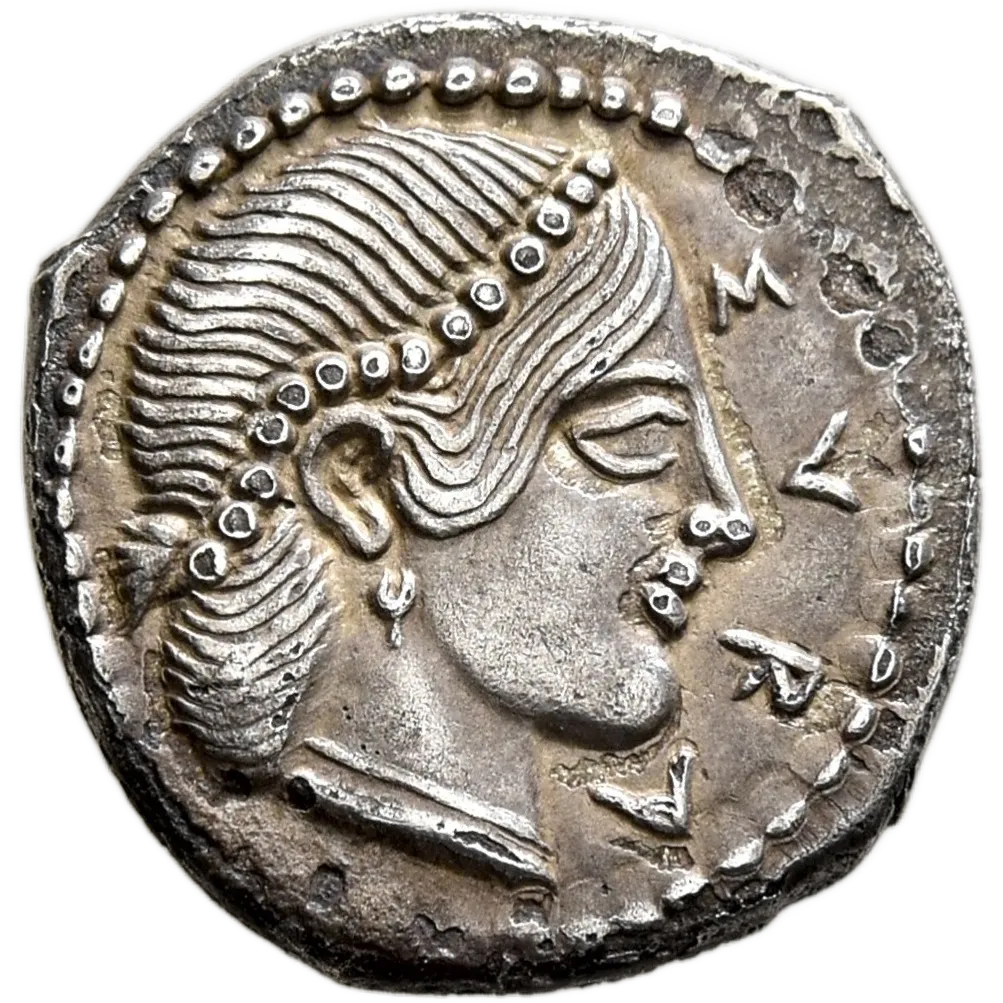
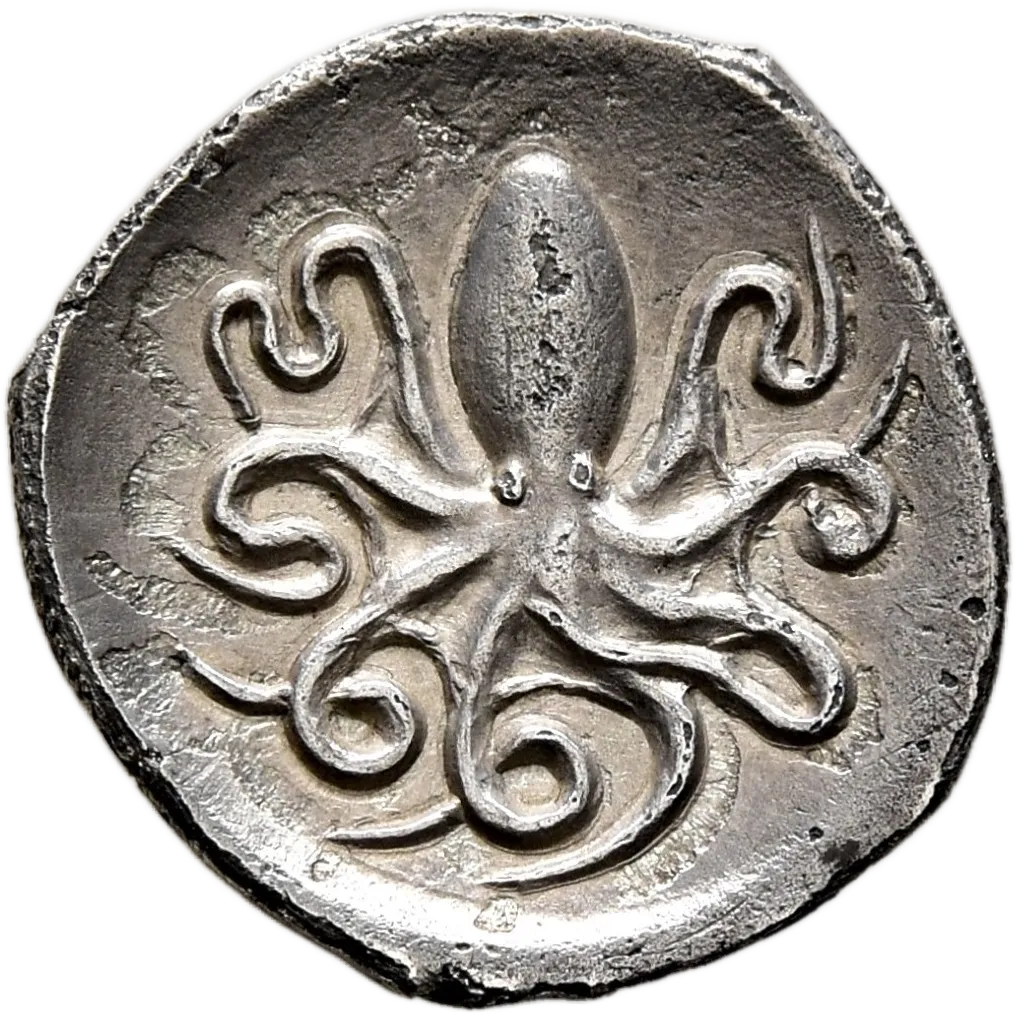
B 467 (O251/R336) • 0.73 g • 12 mm • die axis 1h • AR
Leu Numismatik, Web Auction 31 (7 Sep 2024), lot 2385. - Archive link
- Obverse: Head of Arethusa facing right, wearing pearl taenia, simple necklace, and pendant earring; hair brushed to the side; legend ΣVRA in the right field; surrounded by a beaded border.
- Reverse: Octopus with the fourth tentacle bending right (exception R335 with tentacle left)
- Corresponding tetradrachms: Boehringer 439–448 (R315-319).
Corresponding Tetradrachms (Reverses)
Below are the reverse types of the tetradrachm groups that correspond to the archaic Arethusa / Octopus litrai.
Boehringer 409–414 (R288–292)
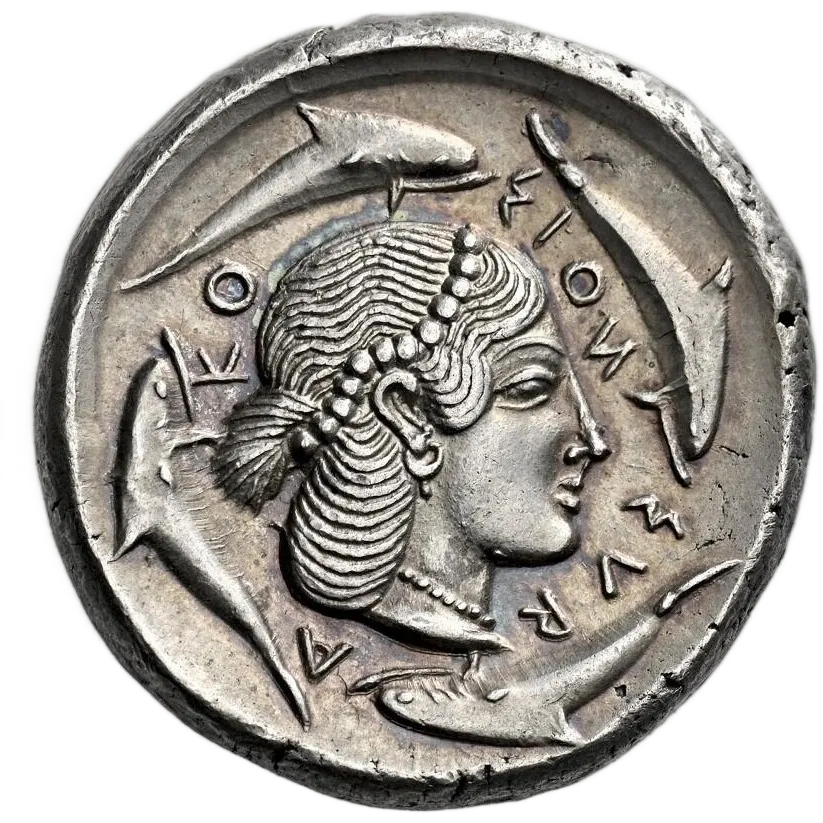
B 409 (O211/R289) • 17.41 g • 27 mm • die axis 3h • AR
Numismatica Ars Classica, Auction 154 (19 May 2025), lot 1092 – Archive link

B 413 (O212/R292) • 17.26 g • 27 mm • die axis 5h • AR
Nomos, Auction 32 (8 June 2024), lot 361 – Archive link
Boehringer 436–438 (R312–314)
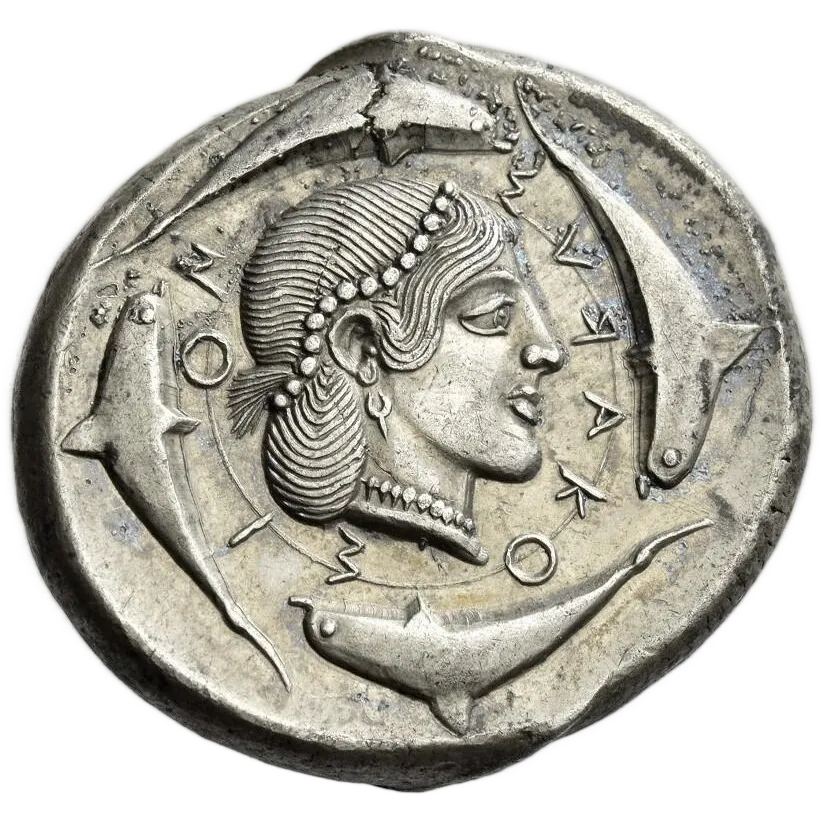
B 436 (O233/R312) • 17.35 g • ? mm • die axis 5h • AR
Numismatica Ars Classica, Auction 138 (18 May 2023), lot 78 – Archive link
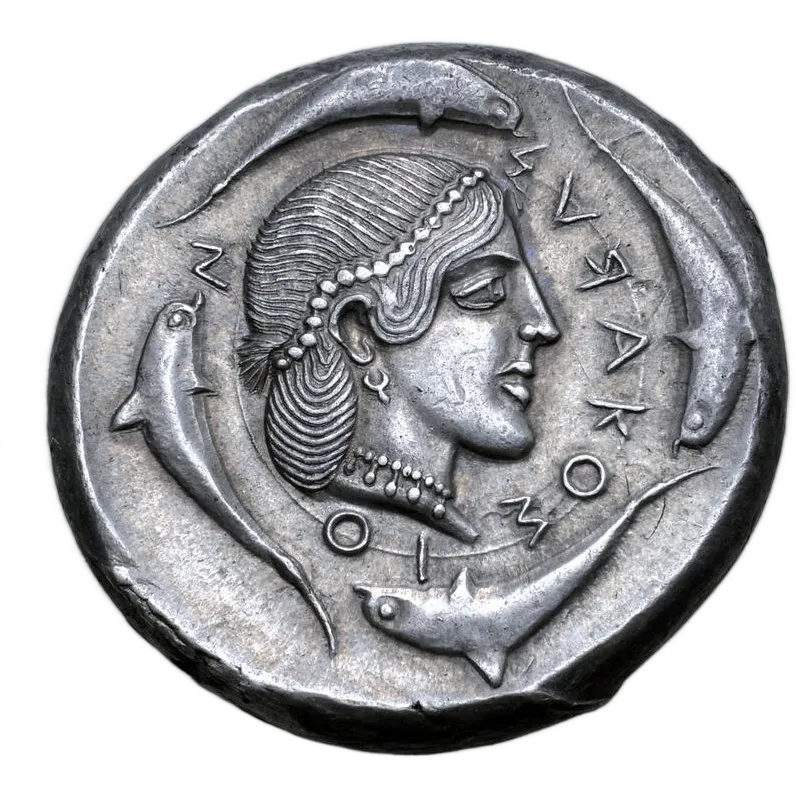
B 437 (O233/R313) • 17.42 g • 25 mm • die axis 11h • AR
Roma Numismatics, Auction 20 (29 Dec 2020), lot 71 – Archive link
Boehringer 439–448 (R315–319)
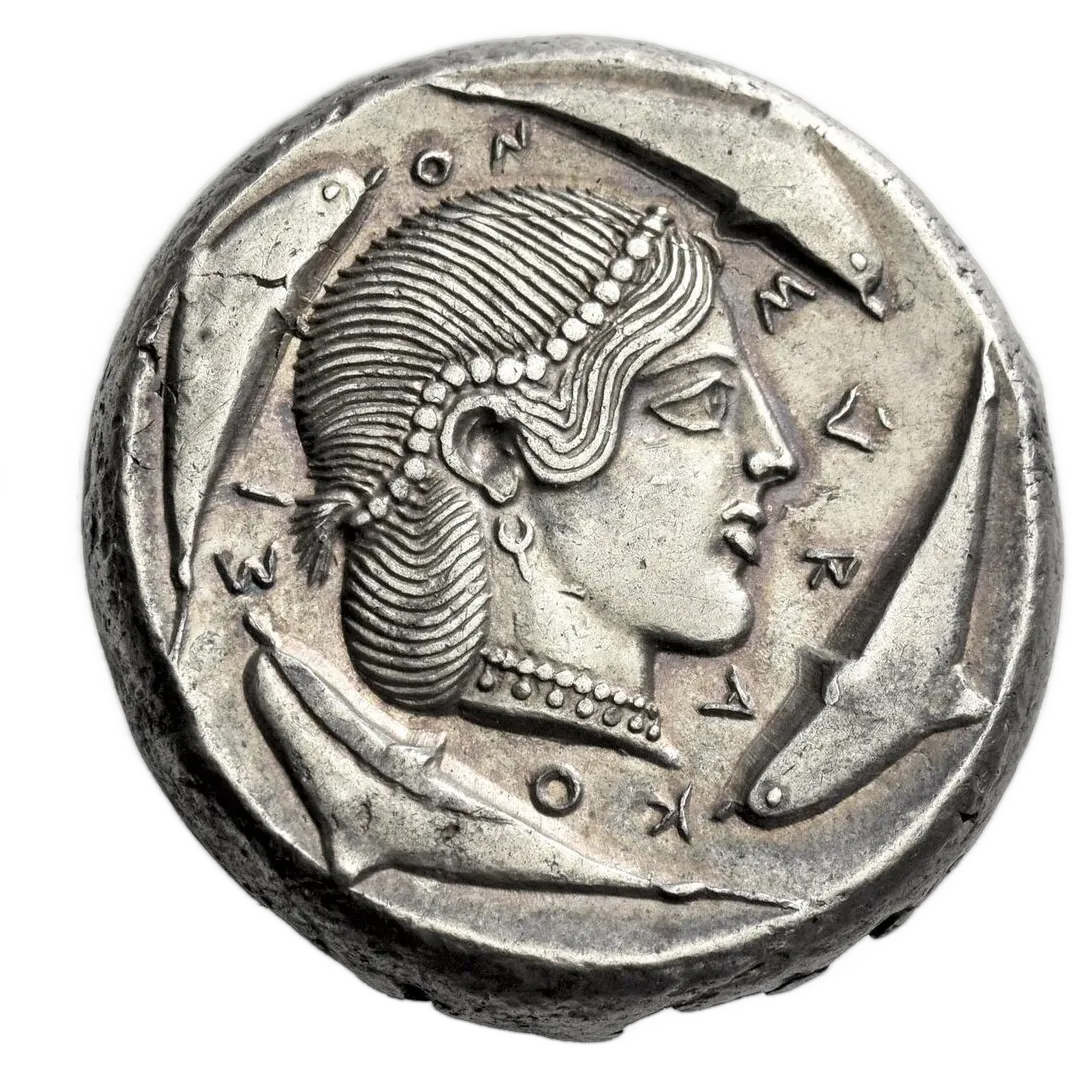
B 440 (O233/R312) • 17.30 g • 25 mm • die axis 8h • AR
Numismatica Ars Classica, Auction 146 (8 May 2024), lot 2096 – Archive link
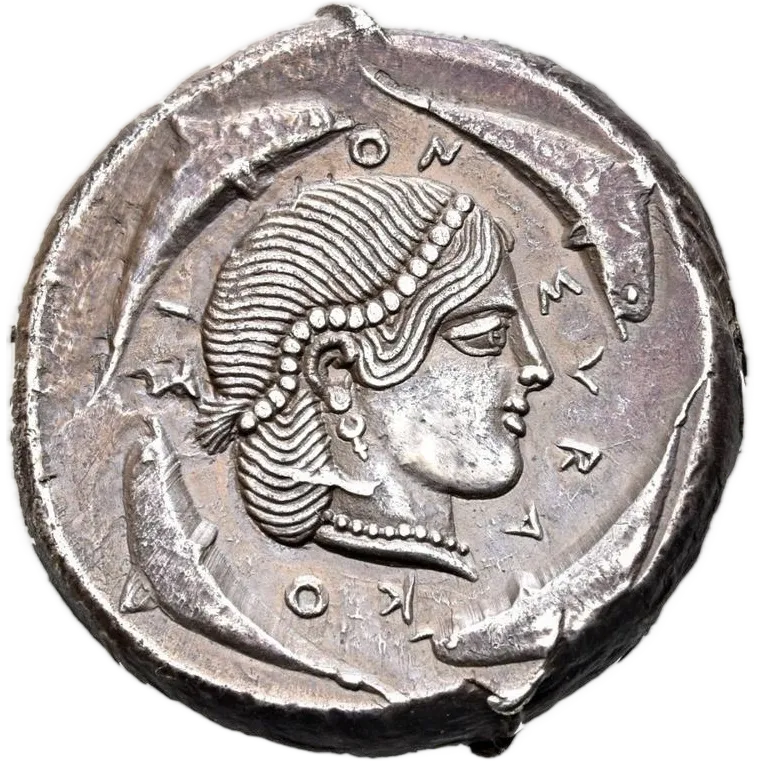
B 448 (O235/R319) • 17.12 g • ? mm • die axis 11h • AR
Gorny & Mosch, Auction 269 (9 Mar 2020), lot 136 – Archive link
Footnotes
For XIIIa he writes: „…noch 50 Stück, von der zweiten 36 Stück bekannt geworden.“ — “Of the first sort another 50 are known; of the second, 36.”
For XIIIb: „…noch 48 hier zugehörende Exemplare bekannt geworden.“ — “A further 48 pieces belonging here have become known.” ↩